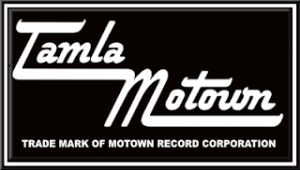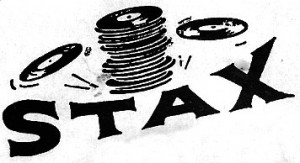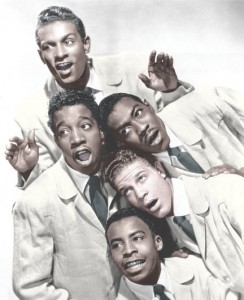Rock n’ Roll is the most important thing in the world. Rock ‘n’ Roll is the lifeblood of modern popular culture and we’d all be a lot better off if every now and then we shut up and just rocked out to some great music. Because of Rock ‘n’ Roll’s paramount importance in the world (and in the life of this writer), I have taken it upon myself to gather all the eloquence I can muster and try, though feebly and incompletely at best, to chronicle the history of this, the greatest accomplishment of modern man: Rock n’ Roll, though series of articles on various points and aspects of Rock history. Previous volumes are available here: Vol. 1 Vol.2.
Vol. 3: Hitsville U.S.A. The Birth of Popular R&B
y 1959 many pop-culturists felt Rock’n’ Roll was a short lived phenomenon and was on its way out. Elvis was in the army and Buddy Holly, Ritchie Valens and the Big Bopper were dead. It looked to some like Rock may have been just a brief fad. While the late fifties and early sixties did still manage to create many exciting Rock albums and Artists, Rock did not dominate the charts and radio the same way it had throughout the fifties. America was changing and music followed suit. A handful of savvy musicians, producers and businessmen tapped into these changes. For the first time ever R&B music was radio friendly for white audiences across America.
A brief aside, if you are reading this I’m sure you are aware that this series is about Rock History; yet this column is all about early popular R&B. Due to this, one might ask, why write this column and not skip directly to the next big movement in Rock ‘n’ Roll? First, context: One of the things I hope those who read this series get is a greater context in which to place Rock Music. Context can help increase appreciation. R&B and Rock are so closely related that if I left out articles like this, it would be difficult to fully understand why later artists were doing what they were doing and where the music they were making came from. The next reason I’m including this R&B column, and the reason I intend to continue writing occasional columns, that aren’t directly based in Rock ‘n’ Roll is spirit. By spirit I mean the feeling of innovation, boundary stretching or rebellion in popular music that helps define Rock. That spirit defines the R&B discussed here in one capacity or another and it permeates throughout many genres of Rock and Rock related music. Which leads to my last point, one which I have made before and I’m confident I will make again, Music doesn’t actually have boundaries or genres. Genres are only useful for classification and organization but even those boundaries are porous rather than definite. Whether or not the music discussed in this article is Rock or R&B doesn’t really matter. It touched me and millions of other people the same way Rock touched them and that alone makes it worthy of analyses or history or whatever you want to call this. Okay, that was enough of that, back to the matter at hand
Before we get into the meat and potatoes of mainstream early pop R&B, we need to talk about a few types of music. The Blues which we have discussed in light detail in the first volume of this series, and Doo-Wop which we’ll discuss now. Doo-Wop grew up in much the same time period as Rock. In the late forties, in urban centers across the U.S., groups of singers were getting together and adapting the popular music song book and contemporary R&B sounds into a unique form of vocal music. The music was mostly a capella. The groups would substitute vocal sounds for the instruments. Often a bass singing a low bom-bom-bom would be used to imitate the sound of an upright Bass. Singers would sing oohs and ahs to imitate strings or other instruments and horn section jabs were often personified by singing a bright doo-wop. This music began being performed primarily in subways, on street corners and in barber shops, but as its popularity grew, it soon found its way onto records, jukeboxes and radios. By the fifties there were many Doo-Wop groups that achieved national and international success, such as: The Orioles, The Penguins, The Drifters, The Five Satins, The Moonglows, The Pretenders, The Del Vikings and the Four Seasons. As these bands grew more popular they often recorded with light instrumental accompaniment. Some vocal groups, like the Coasters, even combined doo-wop sounds with edgier blues and rock sounds all while maintaining a certain light heartedness about the music. All of this music was on the charts and being made at the same time Rock ‘n’ Roll was making its dramatic entrance into the spotlight. As rock music saw a slight decline in the late fifties, Doo-Wop music surged ahead; vocal groups were dominating the charts.
This music was important because it was one of many art forms that broke racial barriers. Many doo-wop groups were composed of African Americans or were integrated and still managed to have mass appeal to largely white audience. Both black and white record producers of the era saw the potential of marketing R&B to both black and white audiences. This yielded a number of groups, bands and labels but the sound of early popular R&B is largely a tale of two labels and two cities: Tamla/Motown from Detroit and Stax from Memphis Tennessee.
In 1957, Berry Gordy, an African American, Korean War Veteran, was trying to get work in Detroit after his jazz record store failed. Through a series of family connections Gordy met Jackie Wilson. Berry took his love of music and songwriting and recorded Wilson singing a song Gordy himself had co-written with his sister called “Reet Petite” While the song had limited success here in the United States, in England the song reached the Top 10. Gordy and Wilson worked together to record several more songs including “Lonely Teardrops” earning a modest profit. Gordy reinvested that profit into creating another music group: The Miracles headed by front man Smokey Robinson.
 At the urging of Smokey, Gordy borrowed some money and started Tamla Records in January of 1959 out of a small Detroit house. This house would later be called “Hitsville U.S.A.” by the artists that cut records inside its walls. Tamla soon established a powerful roster of artists. In addition to the Miracles, Tamla also signed The Supremes, Marvin Gaye, The Temptations, The Four Tops, Gladys Knight and the Pips and Stevie Wonder in the early 60s.
At the urging of Smokey, Gordy borrowed some money and started Tamla Records in January of 1959 out of a small Detroit house. This house would later be called “Hitsville U.S.A.” by the artists that cut records inside its walls. Tamla soon established a powerful roster of artists. In addition to the Miracles, Tamla also signed The Supremes, Marvin Gaye, The Temptations, The Four Tops, Gladys Knight and the Pips and Stevie Wonder in the early 60s.
Motown/Tamla’s success among a broad audience was not only due to attaining great talent, Gordy also carefully groomed the image, appearance and presentation of the artists. The music he and his fellow songwriters wrote contained the rich harmonies of doo-wop and delivered them with snappy instrumental accompaniment. He also took many of the racier themes of R&B and Blues and sanitized them to appeal to a wide young audience. Gordy drilled artists on dance routines, dressed them in matching outfits, and worked with them on their performance skills so that they showed a polish and professionality not to be rivaled. This carefully crafted image made the music of Motown less threatening to many white Americans who were still struggling with the changing racial relations of the early sixties. Gordy’s artists appeared on major television programs like the Ed Sullivan Show and drew mass appeal across all races in the U.S.
 While Motown was producing pop-stars, R&B in other parts of the country was progressing as well. The south’s long tradition of rhythm and blues artists had continually evolved, yielding a sound that, while incorporating some of the vocal stylings of urban doo-wop also contained more of the soulful passion and grit derived from blues and gospel music. By the late fifties artists like James Brown were delighting artists nationwide. But there were many other southern R&B artists that did not have the same success. In 1957 two white business people, Jim Stewart and Estelle Axton started Stax records to highlight R&B in the south. Among the artists that Stax records signed was their house band, a blues organ, guitar, bass and drum quartet, called Booker T. and the M.G.s. Booker T. and the M.G.s were one of the first major integrated bands. They played on scores of records as the backing band for Stax artists like Otis Redding, Wilson Pickett, and Sam and Dave. In addition to being great hired guns, they also spun off a number of their own hits like the legendary “Green Onions.”
While Motown was producing pop-stars, R&B in other parts of the country was progressing as well. The south’s long tradition of rhythm and blues artists had continually evolved, yielding a sound that, while incorporating some of the vocal stylings of urban doo-wop also contained more of the soulful passion and grit derived from blues and gospel music. By the late fifties artists like James Brown were delighting artists nationwide. But there were many other southern R&B artists that did not have the same success. In 1957 two white business people, Jim Stewart and Estelle Axton started Stax records to highlight R&B in the south. Among the artists that Stax records signed was their house band, a blues organ, guitar, bass and drum quartet, called Booker T. and the M.G.s. Booker T. and the M.G.s were one of the first major integrated bands. They played on scores of records as the backing band for Stax artists like Otis Redding, Wilson Pickett, and Sam and Dave. In addition to being great hired guns, they also spun off a number of their own hits like the legendary “Green Onions.”
The M.G.s were not the only legendary studio band used by Stax records. In the small town of Muscle Shoals Alabama, the Muscle Shoals Rhythm section affectionately called the “Swampers” was crafting a tight soulful sound that would change the sound of Rock and R&B forever. The Swampers were actually mostly white musicians but they played soul music and backed many of the most prominent R&B acts of the day including Aretha Franklin and Wilson Pickett. They also were the springboard that would help the Southern Blues Rock band The Allman Brothers get their start. The Swampers sound would continue to reverberate far beyond southern R&B and rock. The Swampers have a long and storied recording career playing with artists including: The Rolling Stones, Elton John and Paul Simon.
R&B music not only changed music and pop culture in America, but throughout the world. The music of artist like Smokey Robinson and Otis Redding, while popular in the U.S., was even bigger in the UK. There it would fall on the ears of mop topped Liverpudlians and wild kids in London and music would never be the same. The world was changing, people’s views on race and culture were shifting; R&B helped to facilitate that change by providing a soulful soundtrack that could be enjoyed by all people regardless of race.
Recommended Listening:
The Moonglows “I Knew From The Start”
The Coaster “Searchin”
Jackie Wilson “Lonely Teardrops”
Smokey Robinson and the Miracles “Tracks of My Tears”
The Supremes “Where Did Our Love Go?”
James Brown “Out of Sight, Prisoner of Love, Please Please Please, etc. live performance”
Booker T. and The M.G.s “Green Onions”
Wilson Picket “In The Midnight Hour”







